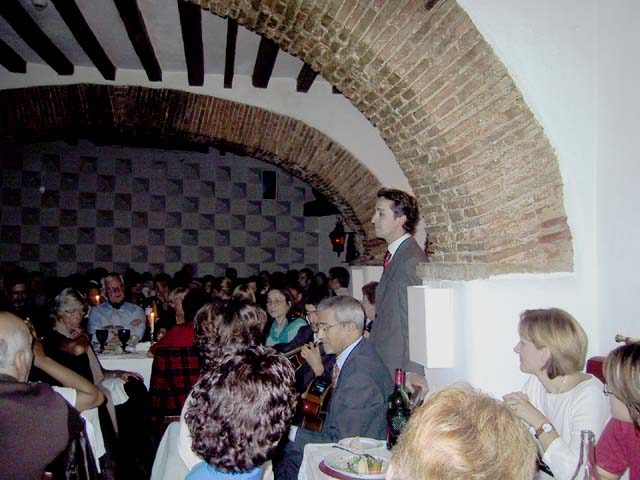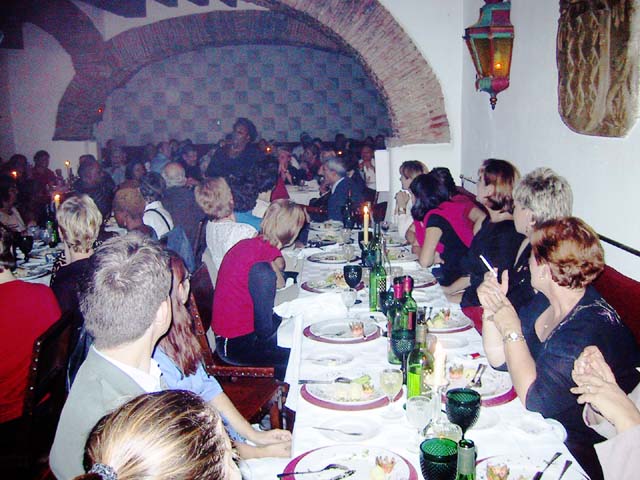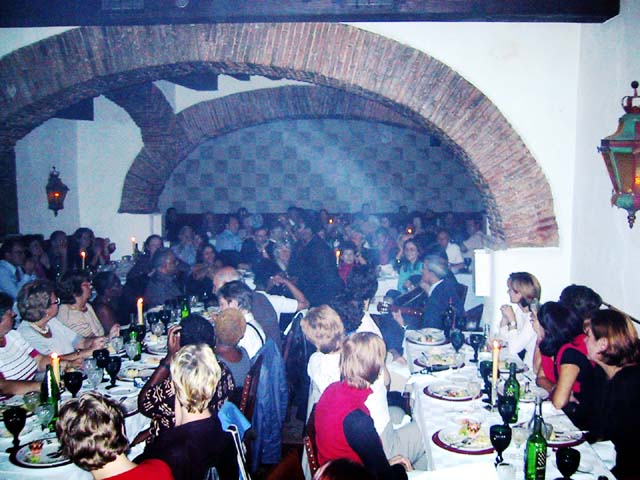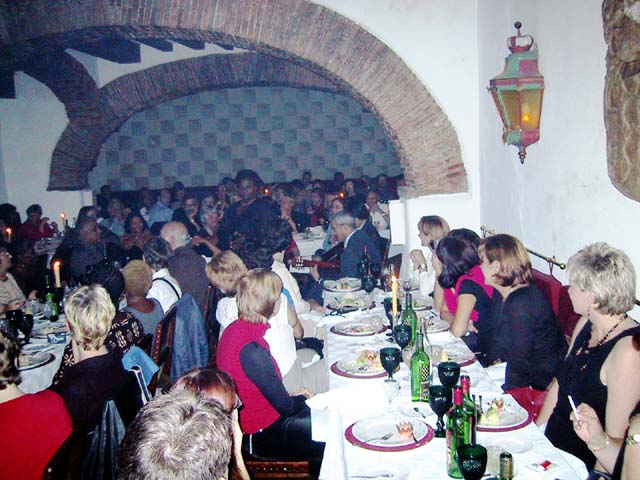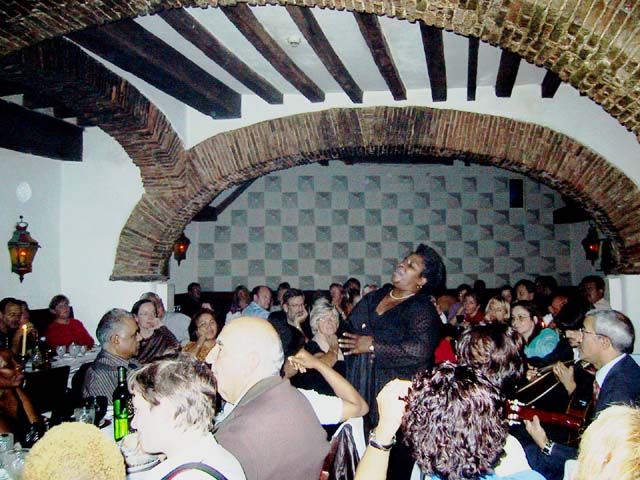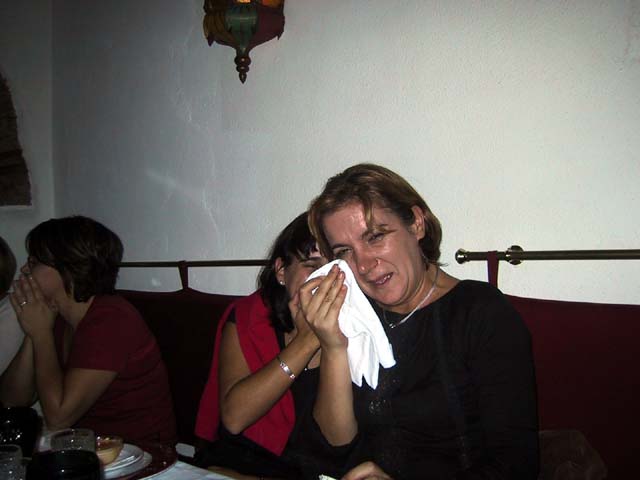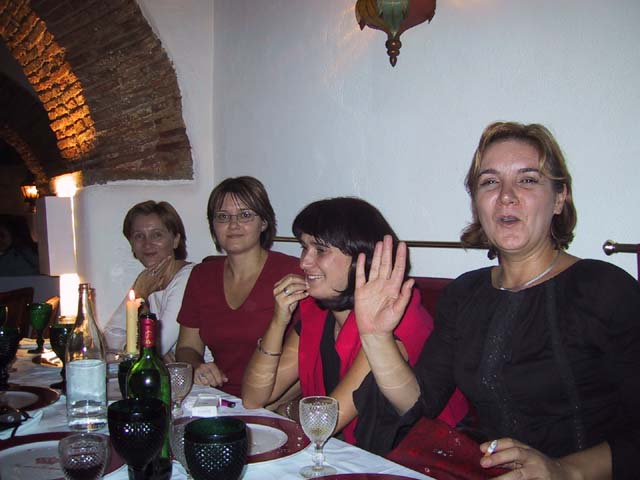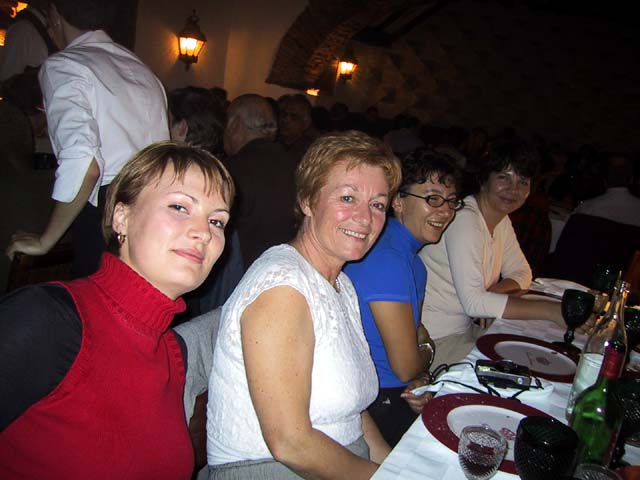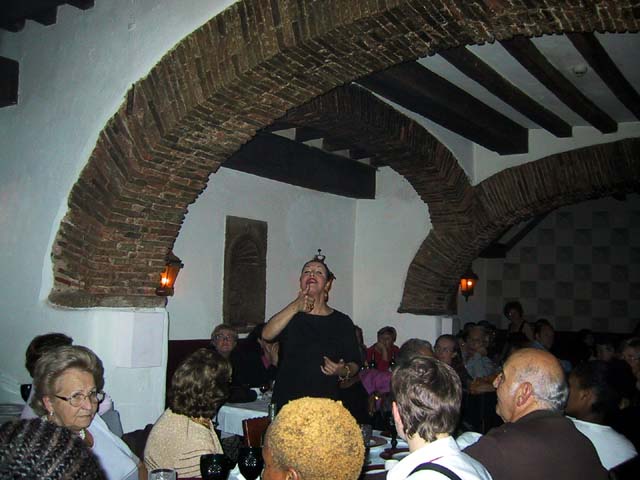|
One night in Lisbon, Janet's conference group went to dinner at the Taverna do Embucado, so Lyn and I tagged along. It's a nice restaurant located in a tiny, dark, hard-to-spot alley not too far from the Lisbon waterfront. Our dinner companions included the conference's "Croatian Delegation," one of whom was overcome by the restaurant's entertainment specialty: fado. What's fado, you ask? Here's an explanation from my "Time Out Lisbon" guide: It's fair to say that you don't know Lisbon well until you've experienced fado. This musical genre is indigenous to the city, remains a lively part of its culture, and is currently making something of a comeback. The word fado derives from the Latin fatum, or fate, and fado has often been regarded as an expression of the supposed national trait of fatalism. This idea has become a little tired but fado is, indeed, often about an unhappy destiny in life, and many of the more famous songs touch upon betrayal, jealousy and disappointed love - sometimes taking these themes to absurdly tragic lengths. However, fado can be upbeat in tone. In the more informal venues, the audience tends to be less reverential and sometimes interrupts the singer with repartee. It's the singer's voice that takes centre stage in giving expression to fado's sentimentality. Authenticity of tone is more important than technical perfection (the singers in some of the cheaper taverns can sometimes be a little harsh on the ear). The singer is usually accompanied by a guitarra, a 12-string Portuguese guitar, and what in Portugal is called a viola, an acoustic Spanish guitar. The guitarra is shaped like a mandolin and its strings are arranged in pairs, producing a resonant sound that at times highlights the singer's melody and at others plays solo, while the viola provides a rhythmic accompaniment to them both. The exact origins of fado are the subject of bitter debate. A Brazilian academic recently aggrieved Portuguese sensibilities by claiming that it was introduced from Brazil in the first half of the 19th century; the earliest known reference to fado, in 1883, described it as incorporating a sensual dance, prompting some observers to link it with samba Others see fado as a legacy of the Moors, due to similarities with North African singing styles. Most agree that it owes something to the troubadour tradition of medieval Provence.
The fellow standing was the first singer of the evening.
This lady was better.
She has everyone's attention
Excellent.
Now with a little soul
Some were just overwhelmed
And embarrassed
The Croatian Delegation
I think that gesture is a good thing
|

